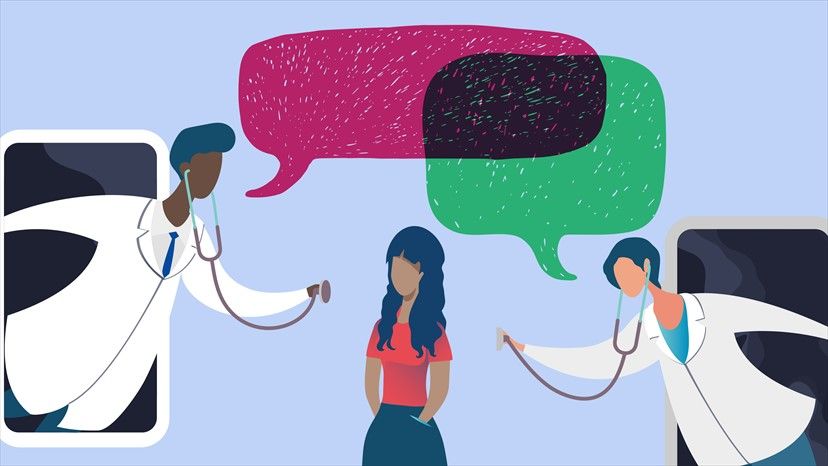If you enjoy this post please share to widen the discussion and consider subscribing for weekly articles to your inbox!
This weeks post has been co-authored by Dr Richard Pratt – GP, entrepreneur and innovation mentor.
When we devise a health tech solution, as innovators with a passion to improve health and care, it’s not unusual for our minds to start spinning about the potential benefits of its use. But with the complex and numerous stakeholders in a healthcare system it can be very difficult to satisfy everyone. In this article we explore some of the key factors that will influence uptake, making sure that those parting with money and those that use a tool, feel the benefit.
The demands upon the health system mean that people are time poor and money is tight, so solutions need to be a no brainer. While the quadruple aim is a fantastic goal it's often difficult to know where to start. A tool designed around a specific problem might be better received if it aims to improve efficiency and cost effectiveness within a system. Alternatively, it might be aimed at improving the quality of care (as judged by patients and clinicians) whilst keeping resource commitments unchanged. The ultimate goal is for it to do both - improve the quality of the care whilst also making it more efficient.
Another mans shoes
The performance of healthcare provider organisations in the NHS are judged against both quality indicators (e.g. Friends & Family Test) and efficiency markers (e.g. 4 hour wait in A&E). The Key Performance Indicators (KPIs) of the provider organisation (quality or efficiency markers) need to become our KPIs. The key is for the innovator to enter the mindset of the healthcare provider organisation; helping them achieve the targets against which their success is already measured and judged, not create new ones.
When considering the impact of a tech solution, we do well to ask ourselves who is the intended i) customer, ii) user and iii) intended beneficiary. Though the NHS is often referred to as an organisation, it might be better thought of as thousands of SMEs (e.g. GP practices) and mid-sized corporates (e.g. acute trusts) with additional separate purchasers (Clinical Commissioning Groups). Defining the benefit on a granular level as well as thinking of which component of the NHS you seek to help is beneficial to ensuring a tool addresses a need. Rather than aiming too broad (e.g. NHS-wide) instead segmenting more accurately to target specific users and the buyers, both their incentives and what success is measured by for each. This ensures a good fit, where the buyer receives the benefit and it addresses the users need.
If, for example, we design a tool for use by GPs, where the benefit is felt to them, asking them to pay for it is relatively straightforward. If however, the tool is designed to reduce the number of times a patient calls 999 but needs to be implemented in primary care, selling this to a GP could be tricky. This is simply because, for a GP as a small business owner to invest in such a tool they need balance the impact of this tool against the cost to address immediate needs of their practice, staff and community. In the shifting world where integrated care is becoming established we hope this will change otherwise the incentives will be disjointed.
Aligning incentives through co-development
This coupling of benefit to customer sounds simple, but in reality, it’s not unusual to fall foul of two pitfalls. First, we might find there’s been a solution created to a perceived but actually non-existent problem i.e. the customer doesn’t see there being a problem that needs fixing and certainly doesn’t wish to pay for it. Secondly, there might be attempts to retro-fit a customer to a solution where they feel no direct benefit themselves by conceiving of the NHS as a single entity. The linking of problem-solution-customer is a thread that runs through the innovation process, frequently needing to be reaffirmed and embodied in the design and strategy.
Clinicians and healthcare staff are immersed in the healthcare service which gives them a unique perspective but can also make it difficult to identify the broader possibilities. In addition patients and commissioners can be key parts linking problem-solution-customer. For these reasons co-development is an essential part of creating an innovative solution that addresses a real need. It is only in so doing that we can maintain confidence in our solutions; ensuring the utility and commercial appeal remain clear and focused on helping healthcare providers to achieve their goals.
Enjoyed this post? Do share with others! You can subscribe to receive posts directly via email.
Get in touch via Twitter or LinkedIn.
Quick links to recent interesting articles:
- EU releases white paper sets Europe’s AI future:health AI should be 1) transparent, traceable & guarantee human oversight, 2) Authorities can test & certify data used, 3) Unbiased data is needed to train AI to perform & respect human rights, especially non-discrimination
- Putting a monetary value on time in nature and the subsequent impact on mental health, can this support social prescribing?
You may also like:




